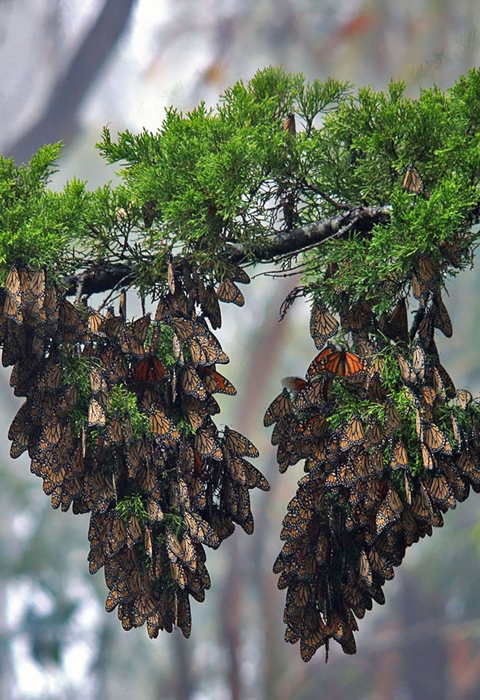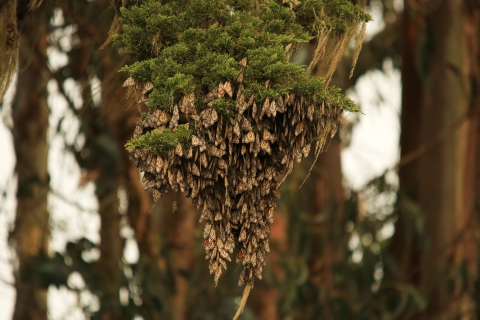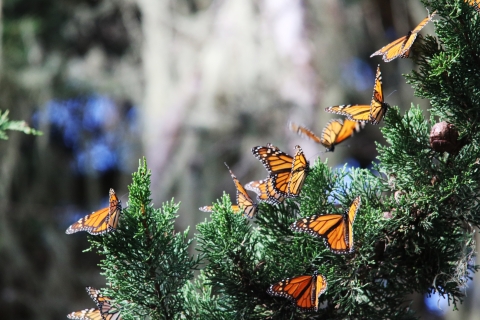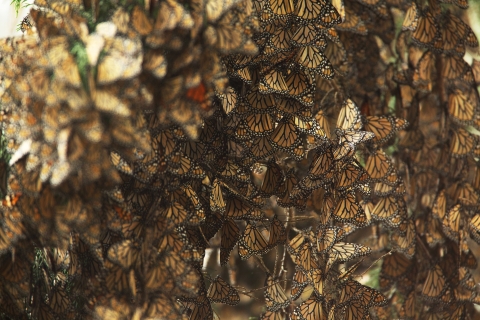Did you know that monarch butterflies overwinter along California’s central coast? The following photos show the migration of the western monarch butterfly at their overwintering sites in and around Pacific Grove, California.
"I hope to share the amazing story of monarch migration with people who don’t have the opportunity to personally visit the overwintering grounds." - Joanna Gilkeson, U.S. Fish and Wildlife Service public affairs specialist.
Witnessing a kaleidoscope of butterflies
Overwintering: The monarchs most vulnerable time
In California, monarch overwintering sites are dispersed from Mendocino County to Baja California, Mexico (That’s 620 miles!). More than half of the sites deemed as priority for them are on public lands, but some are on private lands like golf courses and oil or natural gas facilities.
The trees these butterflies use are often eucalyptus trees, Monterey cypress and Monterey pines. While they are less vulnerable than eastern to severe weather, the degradation of one site has huge impact on their population. These butterflies will move throughout the winter where they overwinter, usually finding the tree with the best cover.
Why the decline in Western monarch butterflies?
Monarch butterflies have been migrating to the West Coast and Mexico to overwinter for centuries. Despite their paramount ability to deal with threats, a butterfly’s natural defenses and endurance can only carry it so far.
Here are just a few of the known threats:
- Breeding and overwintering habitat loss and degradation
- Herbicides & Insecticides (neonicitinoids)
- Tropical milkweed & OE parasite
- Climate change & drought
- Various management of overwintering groves across public/private lands
What can we do?
One of the ways we can help the western population is to avoid planting milkweed near the overwintering grounds. Warm spells in California can cause milkweed to bloom on and off throughout the winter. Blooming milkweed can confuse monarchs into thinking that it’s time to breed and lay eggs. If overwintering monarchs spend their energy feeding and breeding on nearby milkweed, they may not survive the winter. The request is that we do not plant milkweed within 10-15 miles of overwintering grounds.
Another way to help the overwintering population is to not plant tropical milkweed and if you do, cut it back in the winter. The OE parasite thrives on blooming milkweed and weakens monarchs to reduce their chances of successfully completing their lifecycle. Because tropical milkweed blooms year-round and does not go dormant during the winter, the parasite does not die in the winter and can substantially impact monarchs in California. Tropical milkweed is not native to California. You can plant native milkweedto avoid this issue.








